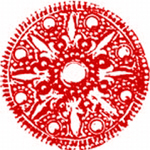
Buddhist Education Centre
Namo Tassa Bhagavato Arahato Sammasambuddhasa
Lankavatara Sutra
Published by
Buddhist Education Centre
A.C.N. 005 701 806
A.B.N. 42 611 496 488
- 33 Brooking Street, Upwey, Victoria 3158, Australia
- Email: info@buddhisteducationcentre.org.au
- Website: buddhisteducationcentre.org.au
Associated Institution of the World Buddhist University
World Fellowship of Buddhists Regional Centre
Copyright – Buddhist Education Centre
May You Be Well And Happy

Summary
A short article providing advice for coming to understand the alaya consciousness from the state of transcendent abiding.

Content
Lankavatara Sutra
and The Studies in The Lankavatara Sutra
Translated from the Sanskrit by Daisetz Teitaro Suzuki
Publisher: Prajna Press, Boulder, Colorado, 80306
The speculation: ‘What is a measurable result of Prajnaparamita practice?’ forms at some stage in the alaya consciousness. For some persons, a fast way of coming to terms with what might be the nature of the alaya consciousness is the sevenfold reasoning (is existent, is not existent, both is and is not existent, neither is nor is not existent, all of the above, none of the above). Studies such as those of Daisetz Teitaro Suzuki generate another method to untangle such speculation.
The following method, studied by John D. Hughes (and quoted from Dr. Suzuki’s commentary on the Lankavatara Sutra) is designed for the same purpose.
In preparing the mind for this investigation it is important to take the view of the Pure Citta and stop playing with or taking an interest in the arising and falling of mental events. This non-discrimination or (non-conceptual) ‘thinking’ is dwelt in for the sake of ‘The Way’.
Discrimination is the result of memory (Vasana) which is accumulated from the unknown past. Vasana literally means “perfuming”, or “fumigation”, that is, it is a kind of energy that is left behind when an act is accomplished and has the power to rekindle the old and seek out new impressions. Through this “perfuming,” reflection takes place which is the same thing as discrimination, and we have a world of opposites and contraries with all its practical consequences. The Triple world, so called, is therefore the shadow of a self-reflecting and self-creating mind. Hence the doctrine of “Mind-only” (cittamatra).
From this view, the practitioner understands the world is like maya, or mirage, as his/her intellect is no longer snared in the meshes of dualistic logic, he/she intuitively perceives that the world of particularisation is no more than the reflection of his/her own mind. His/her life is thus designated as formless or imageless and his/her deeds effortless and purposeless. Yet he/she never relaxes his/her efforts to benefit all sentient beings. He/she knows from his/her transcendental position that Samsara and Nirvana are the same (samata), and yet he/she know not when to stop working for the realisation of the realisation of the highest ideals and also for universal salvation. His/her inner mind is then said to be abiding in the Samadhi known as Mayopama (mirage-like).
Language is always discriminative; when we make reference to anything, it is to be distinguished from other things, thus limiting it to that extent and to that degree.
As long as we are what we are, tied up to the exigencies of material existence and to the inherent needs of logical thinking, language is inevitable, and if we do not use words we have to resort to gestures and movements of some parts of the body in one way or another. In some other Buddha-lands the Buddha-teaching is carried out by mere gazing, or by the contraction of the facial muscles, or by the raising of the eye-brows, by frowning or smiling, by clearing the throat, by the twinkling of an eye, by merely thinking, or by a motion of some kind. This is the “Dharma Mirror” (Full Moon) mind. Articulate speech is not an absolute necessity for human intercourse under such conditions.
May the merit of this practice extend the Dharma Teaching of Geshe Nawang Jangchub.
J.O’D, N.P., J.D.H.